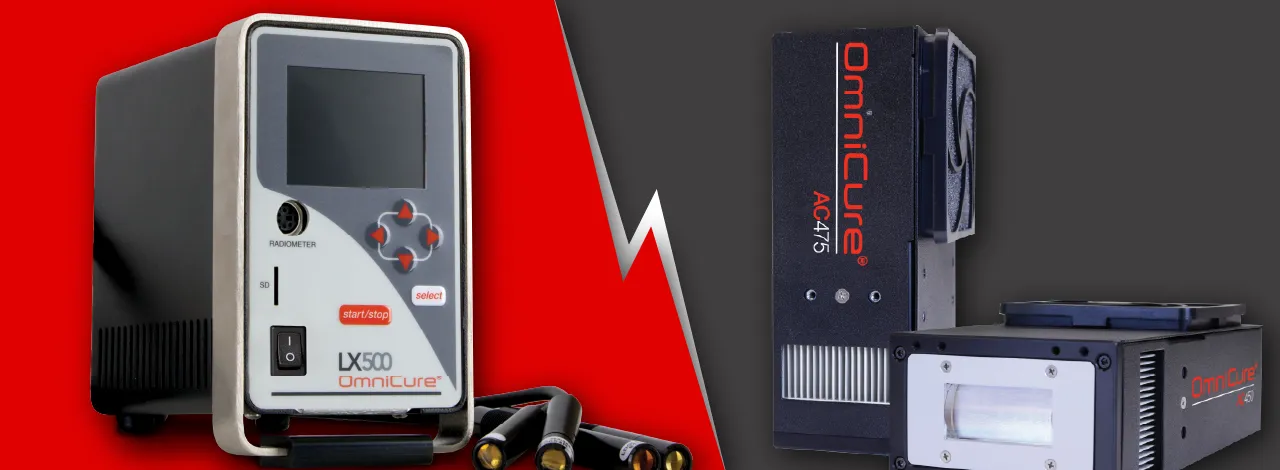Industrial UV curing today primarily relies on two main categories of technologies: on one hand, broad emission systems (surface LED modules), and on the other, localized emission devices (point sources). Both approaches are available in LED technology, and for point sources, also in mercury lamps, addressing different industrial needs.
Understanding the LED Array and the Point Source
What is an LED Array?
An LED array is a surface device that emits uniform UV light over a wide area. It is ideal for applications requiring homogeneous coverage, such as large-format printing, panel coating, or tropicalization of electronic boards with UV varnish. In the latter case, the LED array enables rapid surface polymerization without excessive heating, which is crucial for protecting sensitive electronic components.
What is a Point Source?
The point source, whether using LED technology (such as the LX500 or the UV Pen) or a mercury lamp (such as the S2000), is designed to concentrate a high-intensity UV light on a small, focused area. This type of equipment is particularly suited for high-precision bonding, curing small parts, and applications in medical and electronic fields requiring fast, localized hardening, especially in hard-to-reach areas or for curing resin beads.
Performance comparison
| LED Array (Surface) | Point Source (Localized) | |
|
Technology |
LED only | LED (LX500, UV pen), Mercury (S2000) |
| Coverage Area | Large, uniform surface | Small, focused spot |
| Energy Efficiency | Very high, low consumption | Variable; LED more efficient than mercury |
| Lifespan | Very long (up to 60,000 hours LED) | LED: long, Mercury: shorter |
| Maintenance | Low, no preheating needed | LED: low, Mercury: frequent replacements |
| Light Intensity | Medium to high, uniform | Very high locally, ideal for small volumes |
| Heat Generation | Low, suitable for sensitive materials | LED: low, Mercury: higher heat output |
| Typical Applications | Surface LED modules are used for applications such as printing, coatings, protection of electronic boards by tropicalization, and surface polymerization. |
Precision bonding, encapsulation, bead polymerization, |
Ideal Applications
- LED Array Applications
- Large-format printing
- Panel coatings
- Tropicalization of electronic boards with UV varnish
- Rapid and uniform surface polymerization, particularly for protecting printed circuit boards in electronics or automotive industries
- Point Source Applications
- Precision bonding
- Curing small parts
- Component encapsulation
- Curing of resin or UV gel beads
- Medical, optical, microelectronic applications requiring intense, localized irradiation
Decision Factors
- Material Nature: For substrates sensitive to high temperatures, LED solutions (surface or point) are recommended.
- Area Size to Treat: LED arrays are better suited for large surfaces; point sources are preferred for small or precise spots.
- Required Technology: Point sources exist in both LED and mercury options; surface systems are LED only.
- Operating Costs: LEDs (both point and surface) offer better energy efficiency and reduced maintenance compared to mercury lamps.
Conclusion
The choice between an LED array (surface) and a point source (LED or mercury) depends largely on the size of the area to be treated, the thermal sensitivity of materials, the required UV intensity, and economic constraints. For protecting electronic boards via tropicalization or surface polymerization, surface LED modules are the preferred, benchmark solution. For precision applications, point sources (LED or mercury) remain essential. Advances in LED technology now allow for high-performance, economical point-source solutions adapted to modern industrial processes.

